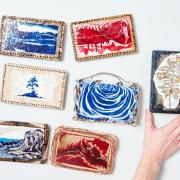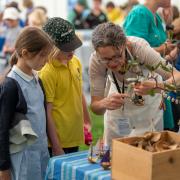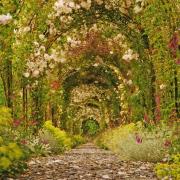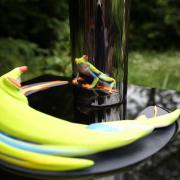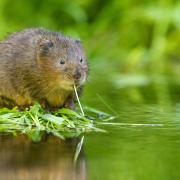The new year is always a good time to start a project. With all those extra calories from Christmas now might be a good time for a bit of physical exercise with a purpose and there is no better time for digging a wildlife pond.
First choose a spot in the garden which is suitable. A wildlife pond should be in a sunny spot but also sheltered from the wind if possible.

Any size is worthwhile but the bigger the better. There must be shallow margins for planting and for easy access to wildlife, but it’s good to have a deep spot (at least 2ft deep) because deep water stays cooler in the summer, helping keep the water clear of algae.
When using pond liner I recommend using a good quality underlay to protect it from stones and I always order enough liner to allow me to fold the excess over at the edges, giving double thickness. This extra layer prevents the main liner being affected by UV light and protects it when I put soil, stones and logs in the shallows.

In the pond there should be about 60 per cent coverage of the surface with oxygenating plants to provide shade under water. I have a white water lily, plenty of fringed water lily, amphibious bistort, water crowfoot and my favourite is the bogbean which has wonderful filamented white flowers in spring.
At the edge, marginal plants provide nectar and pollen as well as cover for spawning amphibians and emerging dragonflies. I only use native species such as purple loosestrife, marsh marigold, marsh cinquefoil, spearwort and cotton grass. Close by it is important to have long grasses and a log pile, these will provide somewhere for amphibians to hide away when not spawning.

There is no need to introduce wildlife to the pond, it will find its own way there and it’s important not to keep ornamental fish which will eat the insects and larvae. The first amphibians to arrive might be frogs, which spawn from January onwards. In February and March common toads lay their spawn in long strands wrapped around the submerged vegetation. This male is pictured hitching a ride on the back of a female as they head towards the pond to spawn. It’s a delight to watch their tadpoles develop through the spring and summer.

The broad-bodied chaser thrives in new garden ponds, this rather plump-looking dragonfly can be seen on the wing from May to July. Males are blue, females and newly emerged specimens are yellow.
To see more of David’s photography visit davidchapman.org.uk
















